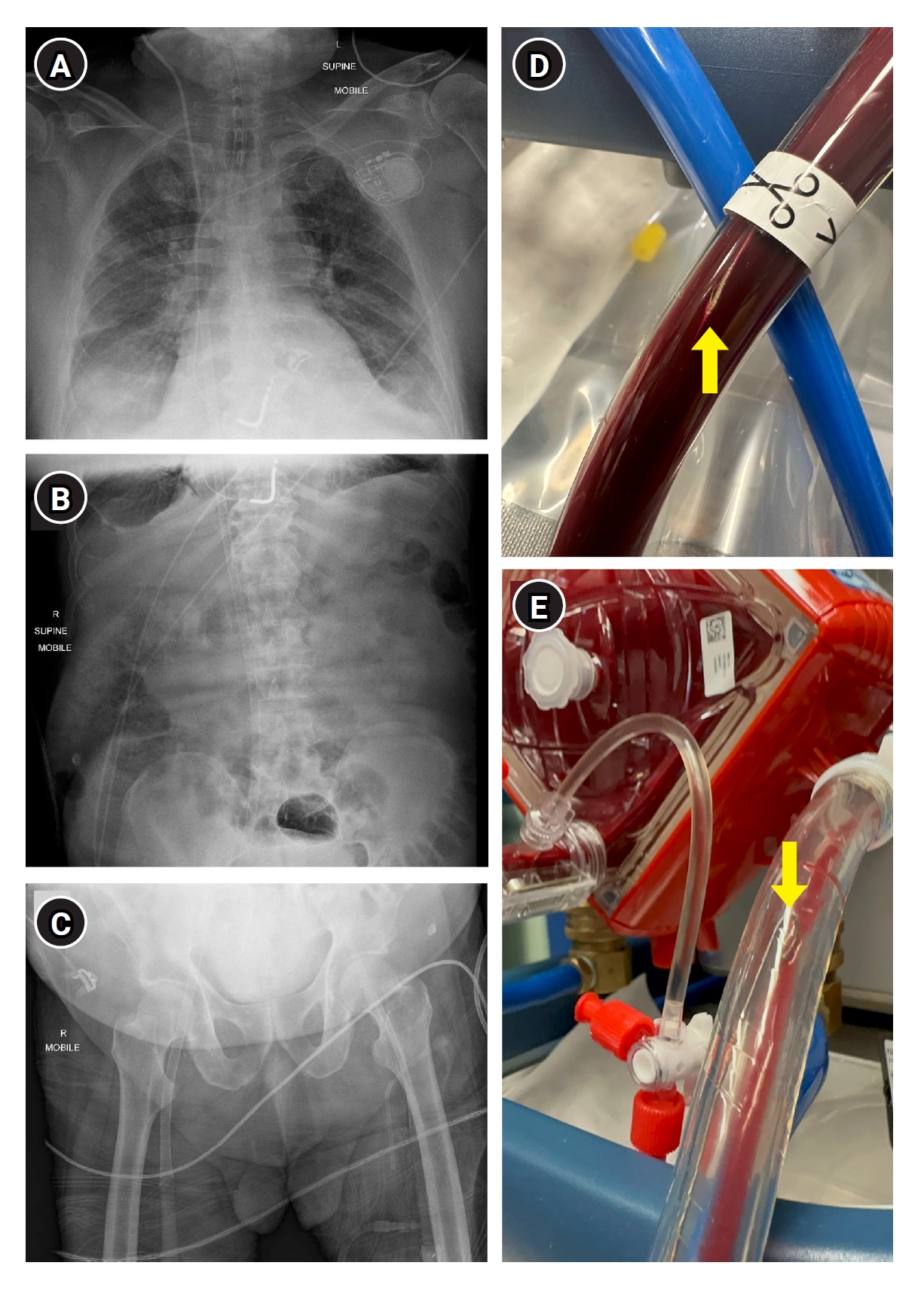Articles
- Page Path
- HOME > Acute Crit Care > Volume 39(1); 2024 > Article
-
Image in Critical Care
Thoracic surgery Transjugular central venous catheter guidewire embolism to venoarterial extracorporeal membrane oxygenation cannula -
Nilesh Anand Devanand
 , Sophie Dohnt
, Sophie Dohnt , Michael Farquharson
, Michael Farquharson
-
Acute and Critical Care 2023;39(1):199-200.
DOI: https://doi.org/10.4266/acc.2023.01270
Published online: December 26, 2023
Intensive Care Unit, Royal Adelaide Hospital, Adelaide, South Australia
- Corresponding author: Nilesh Anand Devanand Intensive Care Unit, Royal Adelaide Hospital, Adelaide, South Australia Tel: +61411531341 E-mail: drnileshanand@gmail.com
©2024 The Korean Society of Critical Care Medicine
This is an Open Access article distributed under the terms of the Creative Commons Attribution Non-Commercial License (http://creativecommons.org/licenses/by-nc/4.0/) which permits unrestricted non-commercial use, distribution, and reproduction in any medium, provided the original work is properly cited.
- 2,343 Views
- 108 Download
-
CONFLICT OF INTEREST
No potential conflict of interest relevant to this article was reported.
-
FUNDING
None.
-
ACKNOWLEDGMENTS
Patient consent was waived for this clinical imaging report.
We thank Dr. Amy Sanguesa FCICM (Intensive Care Unit, Royal Adelaide Hospital) and Mr. Jason Quinn (Picture Archiving and Communication Systems Manager, Royal Adelaide Hospital) for procuring the clinical and radiological images, respectively.
-
AUTHOR CONTRIBUTIONS
Conceptualization: NAD, MF. Data curation: NAD, SD. Project administration: NAD. Writing–original draft: NAD. Writing–review & editing: all authors.
NOTES
SUPPLEMENTARY MATERIALS

- 1. Picard L, Cherait C, Constant O, Boulanger B, Dorget A, Vodovar D, et al. Central venous catheter placement during extracorporeal membrane oxygenation therapy. Anaesth Crit Care Pain Med 2018;37:269-70.ArticlePubMed
- 2. Parikh GP, Shonde S, Shah R, Kharadi N. A case of guidewire embolism during central venous catheterization: better safe than sorry! Indian J Crit Care Med 2014;18:831-3.ArticlePubMedPMC
- 3. Aizawa M, Ishihara S, Yokoyama T. ECMO circuit embolism: a potentially hazardous complication during ECMO therapy. J Clin Anesth 2019;54:162-3.ArticlePubMed
- 4. Pokharel K, Biswas BK, Tripathi M, Subedi A. Missed central venous guide wires: a systematic analysis of published case reports. Crit Care Med 2015;43:1745-56.PubMed
References
Figure & Data
References
Citations


 KSCCM
KSCCM
 PubReader
PubReader ePub Link
ePub Link Cite
Cite


